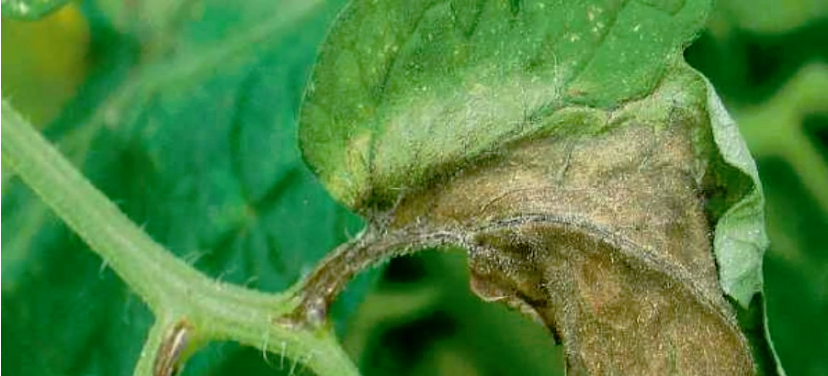THE process of globalisation began a long time ago with ancient traders and European colonisers transporting goods — including plants — between the continents. For example, banana and sugarcane both originated in the Malay Archipelago but thrived wonderfully when they were planted in the West Indies. Likewise, Amazonian rubber trees and oil palm trees from West Africa both developed spectacularly well on arrival in Southeast Asia.
One reason for these plants’ great success: fewer pests and diseases outside their centres of diversity. Many pests which had co-evolved in the natural ecosystems were serendipitously left behind. And hundreds of years can pass before these natural pests catch up with the crops, with sometimes disastrous results.
The infamous potato blight, for example, still haunts memories to the present. Around 1585, the potato was introduced to Europe and England from South America. A few years later, Sir Walter Raleigh took the potato to Ireland, where it was first planted as a garden crop for people of high social status. By the late 17th century, it had become the staple diet for the population.
Beginning in 1845, a fungus, phytophthora infestans, started to infest potato crops in Ireland and northern Europe.
The “potato blight” destroyed leaves, stems, and tubers. Ideal temperature and moisture conditions for the fungus to grow and spread (relative humidity over 90 per cent, temperature over 10°C) occurred over an extended period. By 1852, about three-quarters of the crops were ruined, leading to the human catastrophe called the Irish Potato Famine, during which about one million people died. Another million Irish fled the country, mostly to North America.
How the fungus arrived in Europe remains uncertain, but scientists think it originated in Mexico, spreading first within North America then to Europe via diseased potatoes carried by cargo ships around 1844.
Another well-known example is the accidental introduction of the grape phylloxera — a North American aphid — into Europe around 1865, which subsequently destroyed much of Europe’s grape-growing regions. Grape phylloxera’s root-feeding stages were the most damaging, which led to the replacement of all grapes with planting materials grafted on resistant rootstocks.
The epidemics also resulted in the concept of international plant protection. The first international plant health treaty — the International Phylloxera Convention — was signed by five countries in Bern in 1881 to control the spread of grape phylloxera.
The next major step was the International Convention for the Protection of Plants, signed in Rome in 1929, followed in 1951 by the adoption of the International Plant Protection Convention (IPPC) by the Food and Agriculture Organisation of the United Nations. IPPC, which came into force in April 1952, superseded all previous international plant protection agreements.
Rubber is an important cash crop in many Asia-Pacific countries, mainly Thailand, Indonesia, Vietnam and Malaysia, which produce over 90 per cent of the world’s supply. Most smallholders depend on rubber for their livelihoods.
Rubber was introduced in the region without its South American leaf blight (SALB), which made possible its large scale cultivation. SALB is another fungal disease, which causes severe dieback of trees. There is no cure, except possibly by using resistant clones, which are still at experimental stage. The disease, therefore, still poses a major threat to the region. Thankfully, effective quarantine measures regulate transcontinental movements and the disease has been kept at bay, restricted to South and Central America.
It is, therefore, a matter of concern then when Indonesia recently reported an outbreak of another serious rubber tree problem — fusicoccum canopy disease — which caused early leaf fall and reduced latex yield up to 40 per cent.
The disease, first detected in North Sumatra in 2016, spread to southern Sumatra by the end of last year, impacting particularly the Palembang area, where over 25 per cent of Indonesian rubber is planted.
With over 22,000ha of Indonesian rubber areas infected, the rapid spread of the disease has been alarming, reaching from Java and Kalimantan to Sulawesi. Most of current recommended clones are found to be susceptible.
The disease is blind to geopolitical boundaries, of course, and may rapidly land on our shores in no time. In Malaysia, we have already narrowly escaped one recent encounter with fusicoccuminfection, which was first reported in 1987 in Johor, spread to Perak and Selangor in 2003, but fortunately did not become an epidemic.
To safeguard the rubber industry and smallholders’ livelihoods in Malaysia as well as the region, countries need to work together, and work fast, to put in place appropriate control measures to effectively stop the spread of fusicoccum.
It is a grave reminder that removing or compromising constraints to movement of pathogens across geographical and political barriers — as increasing land, sea and air routes are opened up for trade between countries — may lead to unstoppable breaches in biosecurity.
Zakri Abdul Hamid is a senior fellow of the Academy of Sciences Malaysia and a recipient of the 2015 Merdeka Award

